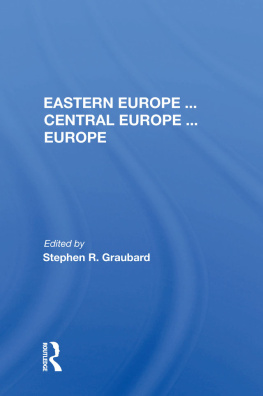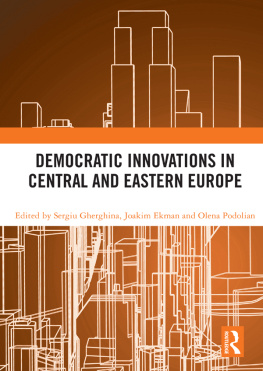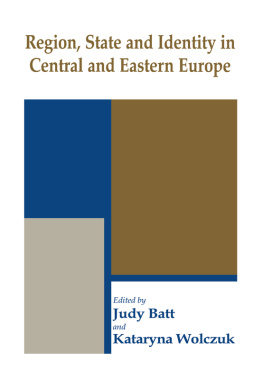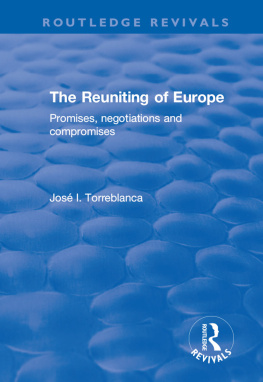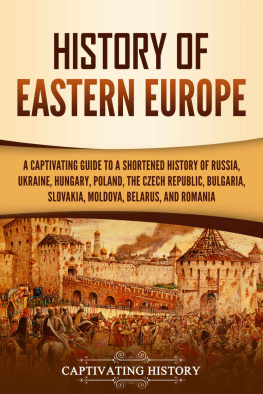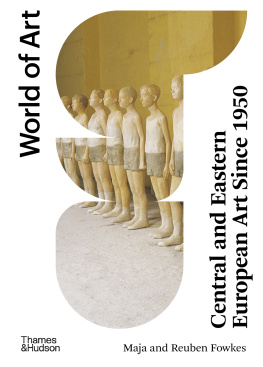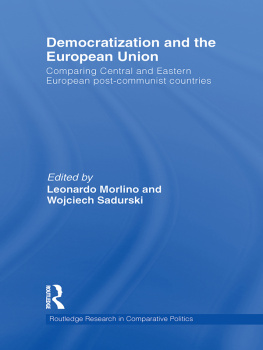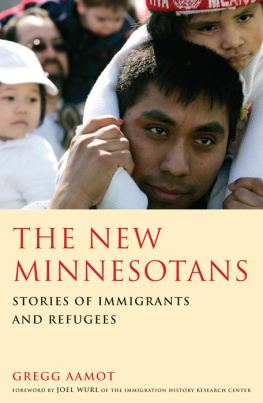
Eastern European
Immigrant Families
Routledge Advances in Sociology
For a full list of title in this series, please visit www.routledge.com
12. After the Bell
Educational Success, Public Policy and Family Background
Edited by Dalton Conley and Karen Albright
13. Youth Crime and Youth Culture in the Inner City
Bill Sanders
14. Emotions and Social Movements
Edited by Helena Flam and Debra King
15. Globalization, Uncertainty and Youth in Society
Edited by Hans-Peter Blossfeld, Erik Klijzing, Melinda Mills and Karin Kurz
16. Love, Heterosexuality and Society
Paul Johnson
17. Agricultural Governance
Globalization and the New Politics of Regulation
Edited by Vaughan Higgins and Geoffrey Lawrence
18. Challenging Hegemonic Masculinity
Richard Howson
19. Social Isolation in Modern Society
Roelof Hortulanus, Anja Machielse and Ludwien Meeuwesen
20. Weber and the Persistence of Religion
Social Theory, Capitalism and the Sublime
Joseph W. H. Lough
21. Globalization, Uncertainty and Late Careers in Society
Edited by Hans-Peter Blossfeld, Sandra Buchholz and Dirk Hofcker
22. Bourdieu's Politics
Problems and Possibilities
Jeremy F. Lane
23. Media Bias in Reporting Social Research?
The Case of Reviewing Ethnic Inequalities in Education
Martyn Hammersley
24. A General Theory of Emotions and Social Life
Warren D. TenHouten
25. Sociology, Religion and Grace
Arpad Szakolczai
26. Youth Cultures
Scenes, Subcultures and Tribes
Edited by Paul Hodkinson and Wolfgang Deicke
27. The Obituary as Collective Memory
Bridget Fowler
28. Tocqueville's Virus
Utopia and Dystopia in Western Social and Political Thought
Mark Featherstone
29. Jewish Eating and Identity Through the Ages
David Kraemer
30. The Institutionalization of Social Welfare
A Study of Medicalizing Management
Mikael Holmqvist
31. The Role of Religion in Modern Societies
Edited by Detlef Pollack and Daniel V. A. Olson
32. Sex Research and Sex Therapy
A Sociology Analysis of Masters and Johnson
Ross Morrow
33. A Crisis of Waste?
Understanding the Rubbish Society
Martin O'Brien
34. Globalization and Transformations of Local Socioeconomic Practices
Edited by Ulrike Schuerkens
35. The Culture of Welfare Markets
The International Recasting of Pension and Care Systems
Ingo Bode
36. Cohabitation, Family and Society
Tiziana Nazio
37. Latin America and Contemporary Modernity
A Sociological Interpretation
Jos Maurcio Domingues
38. Exploring the Networked Worlds of Popular Music
Milieu Cultures
Peter Webb
39. The Cultural Significance of the Child Star
Jane O'Connor
40. European Integration as an Elite Process
The Failure of a Dream?
Max Haller
41. Queer Political Performance and Protest
Benjamin Shepard
42. Cosmopolitan Spaces
Europe, Globalization, Theory
Chris Rumford
43. Contexts of Social Capital
Social Networks in Communities, Markets and Organizations
Edited by Ray-May Hsung, Nan Lin, and Ronald Breiger
44. Feminism, Domesticity and Popular Culture
Edited by Stacy Gillis and Joanne Hollows
45. Changing Relationships
Edited by Malcolm Brynin and John Ermisch
46. Formal and Informal Work
The Hidden Work Regime in Europe
Edited by Birgit Pfau-Effinger, Lluis Flaquer, and Per H. Jensen
47. Interpreting Human Rights
Social Science Perspectives
Edited by Rhiannon Morgan and Bryan S. Turner
48. Club Cultures
Boundaries, Identities and Otherness Silvia Rief
49. Eastern European Immigrant Families
Mihaela Robila
Eastern European
Immigrant Families
Mihaela Robila
First published 2010
by Routledge
711 Third Avenue, New York, NY 10017
Simultaneously published in the UK
by Routledge
2 Park Square, Milton Park, Abingdon, Oxon OX14 4RN
Routledge is an imprint of the Taylor & Francis Group, an informa business
2010 Taylor & Francis
Typeset in Sabon by IBT Global.
All rights reserved. No part of this book may be reprinted or reproduced or utilised in any form or by any electronic, mechanical, or other means, now known or hereafter invented, including photocopying and recording, or in any information storage or retrieval system, without permission in writing from the publishers.
Trademark Notice: Product or corporate names may be trademarks or registered trademarks, and are used only for identification and explanation without intent to infringe.
Library of Congress Cataloging in Publication Data
Robila, Mihaela.
Eastern European immigrant families / by Mihaela Robila.
p. cm.(Routledge advances in sociology ; 49)
Includes bibliographical references and index.
1. Europe, EasternEmigration and immigration. 2. Europe, CentralEmigration and immigration. 3. Immigrant families. 4. Assimilation (Sociology) I. Title.
JV7597.R63 2009
305.9069120947dc22
2009012021
ISBN10: 0-415-99406-3 (hbk)
ISBN10: 0-203-86991-5 (ebk)
ISBN13: 978-0-415-99406-4 (hbk)
ISBN13: 978-0-203-86991-8 (ebk)
Contents
Figures
Tables
1 Eastern European Immigrant Families
Introduction
Migration is a dynamic and worldwide contemporary process. With an estimated 191 million migrants worldwide in 2007 (176 million in 2000), migration has been a central issue on the agenda for governments and policymakers (www.iom.int, 2007). Migration is the defining issue of the twenty-first century, and as such, the question is no longer whether to have migration, but rather how to manage migration effectively so as to enhance its positive and reduce its negative impacts (McKinley, 2007, p.1). In 1990, the United Nations General Assembly adopted the International Convention on the Protection of the Rights of All Migrant Workers and Members of Their Families (UN, 1990, res. 45/158). In response to increased immigration, in 2000, the United Nations General Assembly proclaimed 18 December International Migrants Day (UN, res. 55/93). As such, United Nations Member States, intergovernmental and non-governmental organizations are invited to observe International Migrants Day through the dissemination of information on human and migrant rights, and through the design of actions to ensure their protection.
In 2005, in Europe there were 64.1 million migrants, representing 8.8% of the area's population; while North America had 44.5 million migrants, representing 13.5% of the area's population (International Organization for Migration, 2007). In particular, with 38.4 million migrants, the United States hosts the highest number of international migrants (followed by Russian Federation12.1 million, and Germany10.1million) (IOM 2007).
One large immigrant group comes from Eastern Europe (EE), an area that includes the former communist-bloc countries: the Czech and Slovak Republics, Poland, Slovenia, Croatia, Bosnia and Herzegovina, Serbia and Montenegro, the Republic of Macedonia, Hungary, Romania, Bulgaria, Albania, Moldova, Ukraine, Belarus, Lithuania, Latvia, Estonia, and Russia. During the communist regime (19451989), emigration from this region was extremely limited, with small waves of Russian Jewish refugees escaping religious persecution. Following the fall of the iron curtain in the late 1980s and early 1990s, Eastern European countries have allowed their residents to emigrate. Inflows of EE immigrants have been increasing, pushed by economic hardships such as high unemployment rates and low wages in their home countries and war in Bosnia and Herzegovina and Kosovo. In 2006, there were 4.27 million Eastern European immigrants in the United States, a significant increase from 1.256 million in 1995, among the most numerous groups being those from Russian Federation (444,000), Poles (353,000), Slovakians (218,000), Yugoslavians (154,000), Ukrainians (145,000), Romanians (98,000), and Hungarians (89,000) (Migration Policy Institute, 2009).


